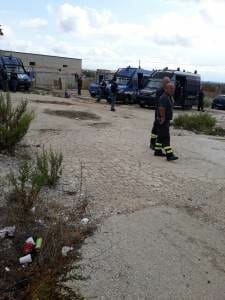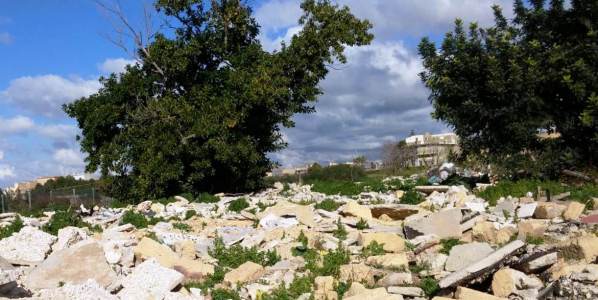Salina Grande – report 15/09/2012
Returning to Salina Grande after a couple of months away, it is immediately possible to notice that the atmosphere is much more tense than when were last here in June. In addition to the standard Carabinieri van, there are also a variety of military vehicles and one belonging to the Finance Police, all within the grounds of the structure. Police and soldiers can regularly be seen crossing the courtyard. It’s not difficult to realise that the distressing atmosphere within the CARA (Hosting Centre for Asylum Seekers) is due to the heavy police and military presence, rather than the end of summer showers.
The increase in on site checks by external security forces could be due to the frequent number of clashes, many of which we have witnessed in previous months and which culminated in a significant riot last July. Salina Grande and its Reception Centre for refugees and asylum seekers has already played host to a number of clashes amongst its residents and also between the asylum seekers and the police. In July, however, we were informed of a riot on a much larger scale which required the use of tear gas in order to break it up. The continual frustration felt by the asylum seekers who stay for months on end or even years in the Centre, which has on more than one occasion been defined as inappropriate (http://palermo.repubblica.it/cronaca/2011/11/26/news/immigrati-25627861/), is considered to be the main trigger for the riot. The months following the July riot have seen conditions worsen and as if this were not enough, the unrest has further increased as a result of the fact that different asylum seekers receive different treatment. It is undeniable that some cases are processed faster than others depending on the migrant’s country of origin. Yet it is inadmissible that this discrimination is further exploited by some of the Centre’s employees. This past year’s “outbreak” of the North African “invasion” has led to the unrelenting harassment of Tunisians in the CARAs. This time, however, there are few Tunisians in the Centre and many of those which are there have been transferred from the Vulpitta Detention Centre.
In addition to the increased police and military presence at the Centre, there is something else which is new: the building which previously belonged to the church, where many of the migrants slept while awaiting admission to the Centre, has been closed and bricked up. The reason behind this remains unknown although it is not difficult to imagine that it is a form of retaliation stemming from the fact that those who used to stay there often received food from the migrants housed within the CARA. Despite the closure of this building, migrants and asylum seekers are still present outside the Centre. They are sleeping in the area’s many abandoned factories. Sheets, covers and other personal items can be seen in and around the rundown buildings, providing evidence that they are lived in.
Diana Pisciotta



